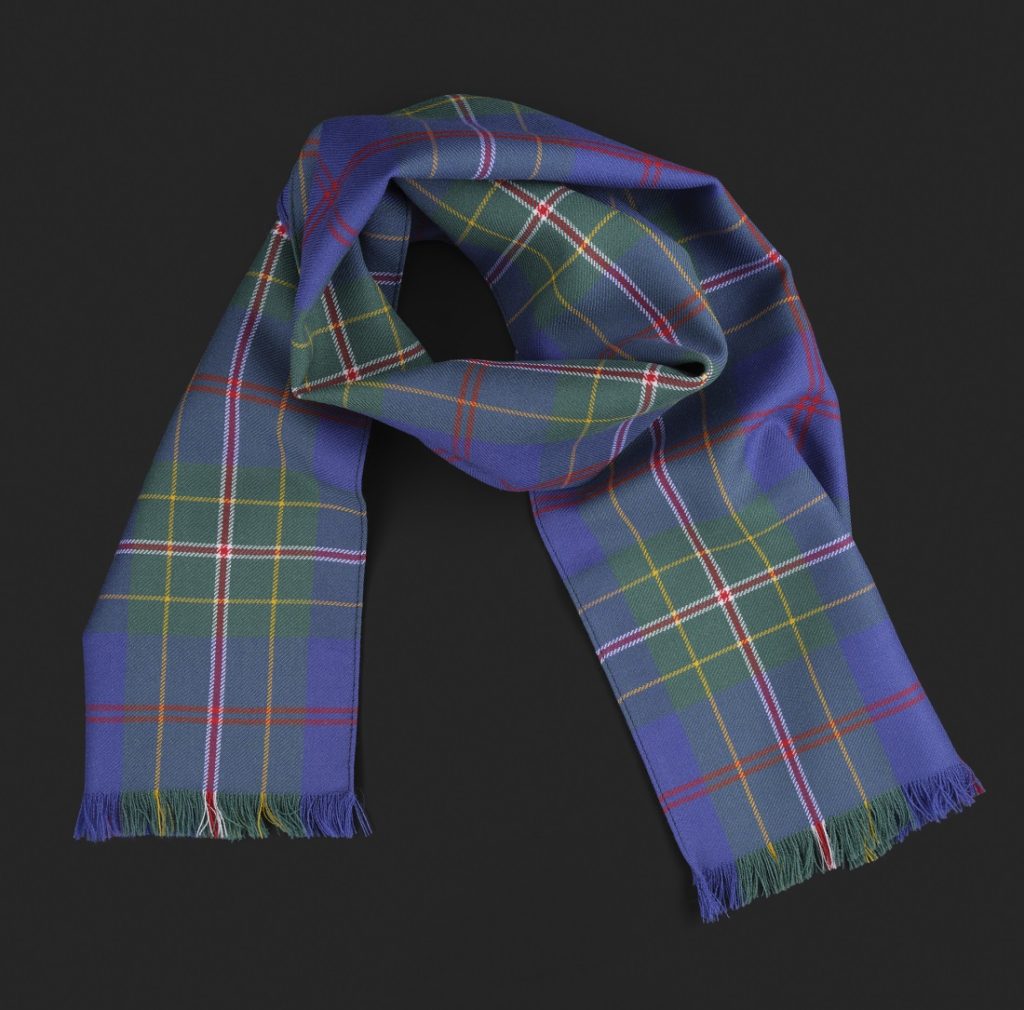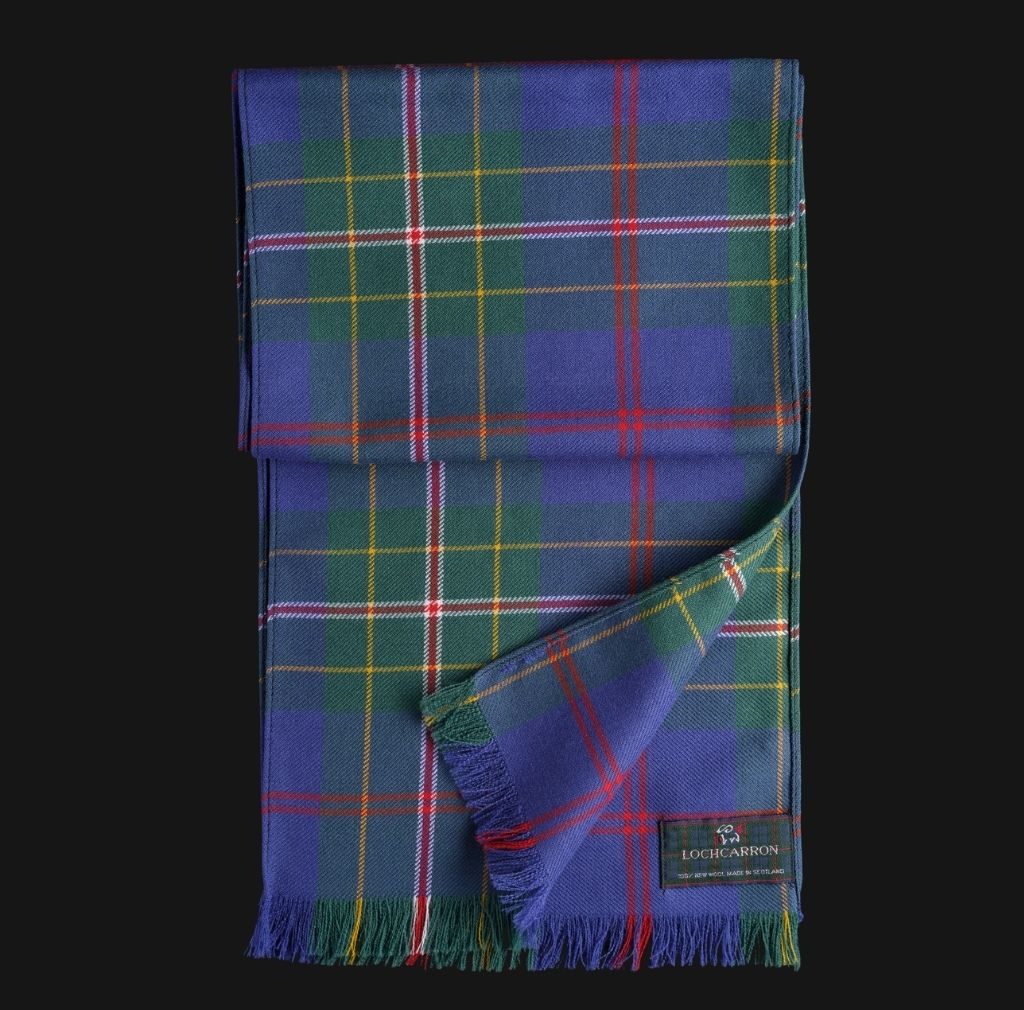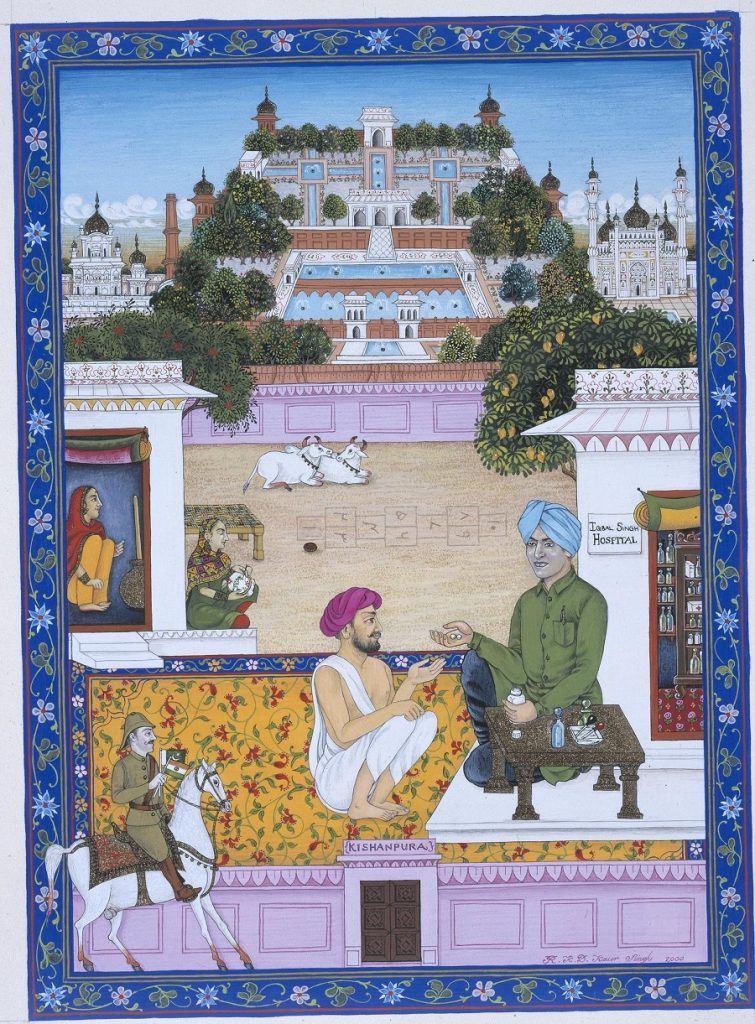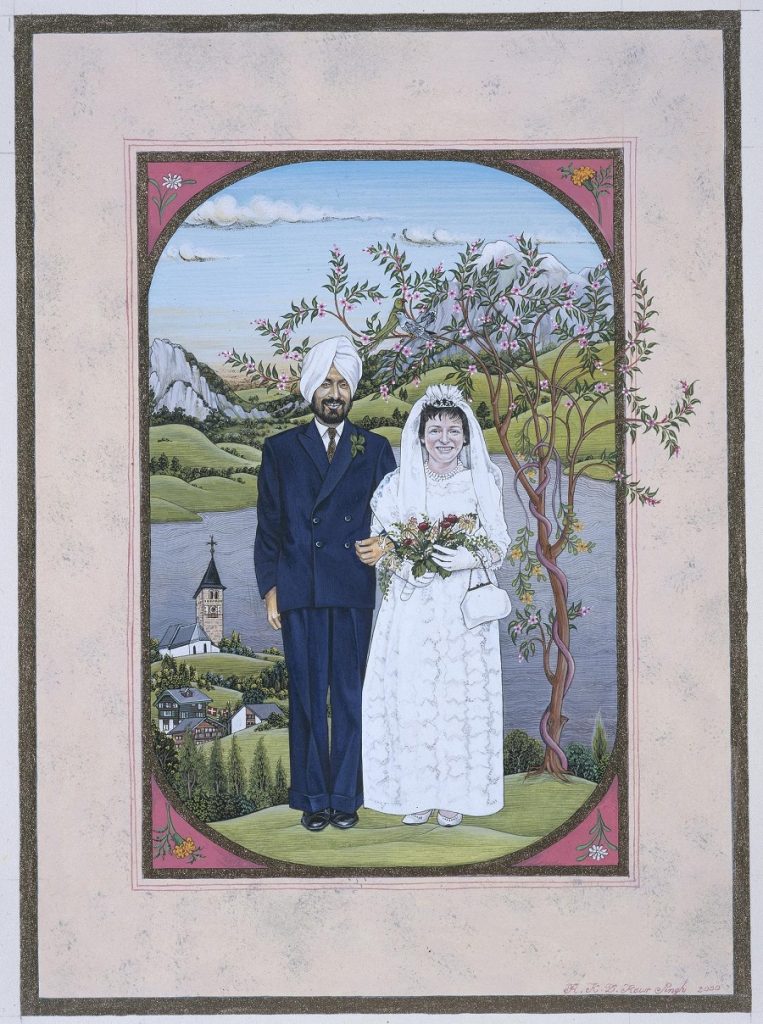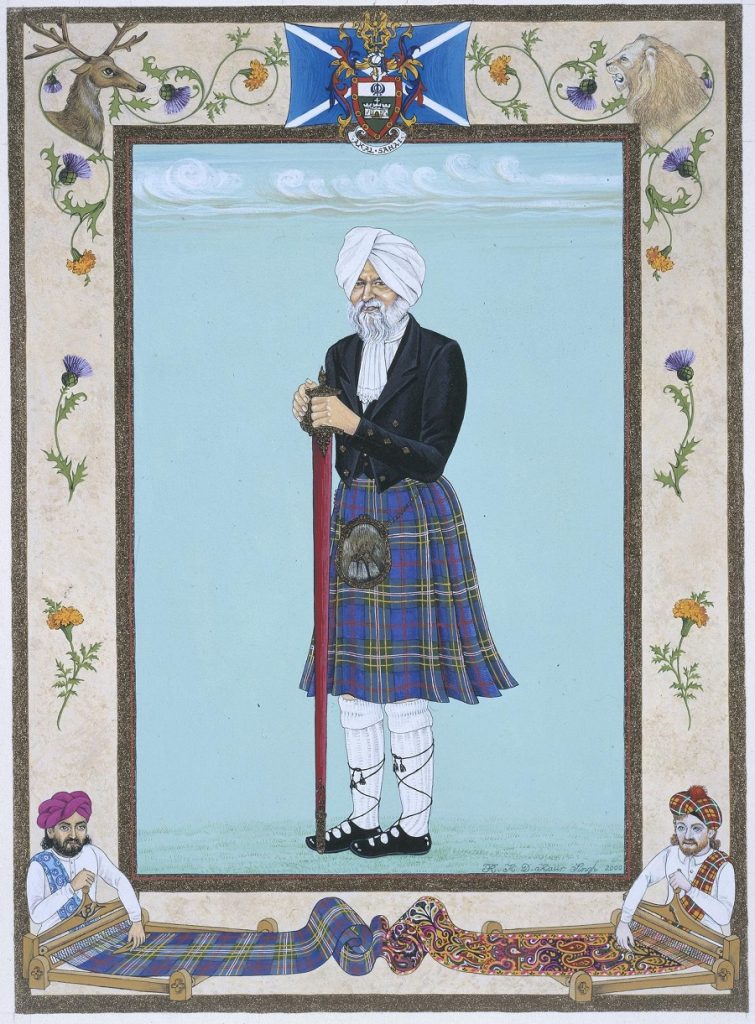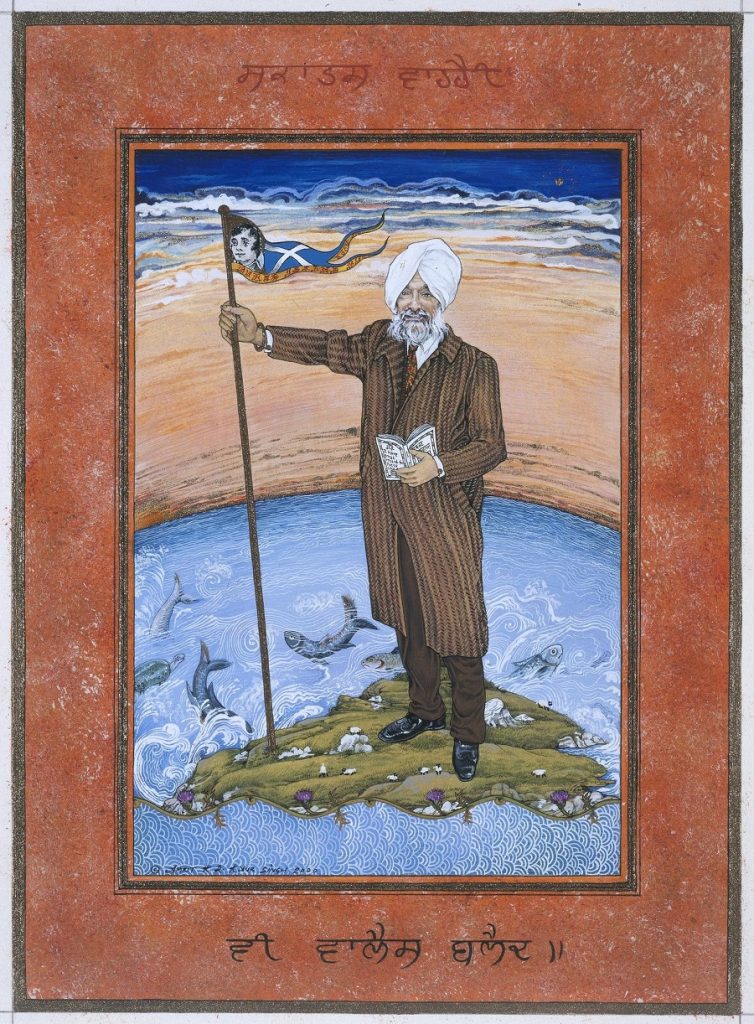The Iqbalnama is a series of six paintings depicting the life of Sardar Iqbal Singh, a Sikh man from Lahore, India, who moved to Scotland and fostered cross-cultural connections. We mark one year since he passed away with a reflection on his achievements by Elizabeth Guest, as well as a video focused on the details of The Iqbalnama paintings.
Sardar Iqbal Singh was a wealthy Sikh who fell in love with, and moved to, Scotland. Having bought a barony, he lived in a large turreted house in Lesmahagow, Lanarkshire, which he renamed ‘Little Castle’. This led to him being affectionately known as the ‘Laird of Lesmahagow’. He died on 6 March 2021, aged 91.
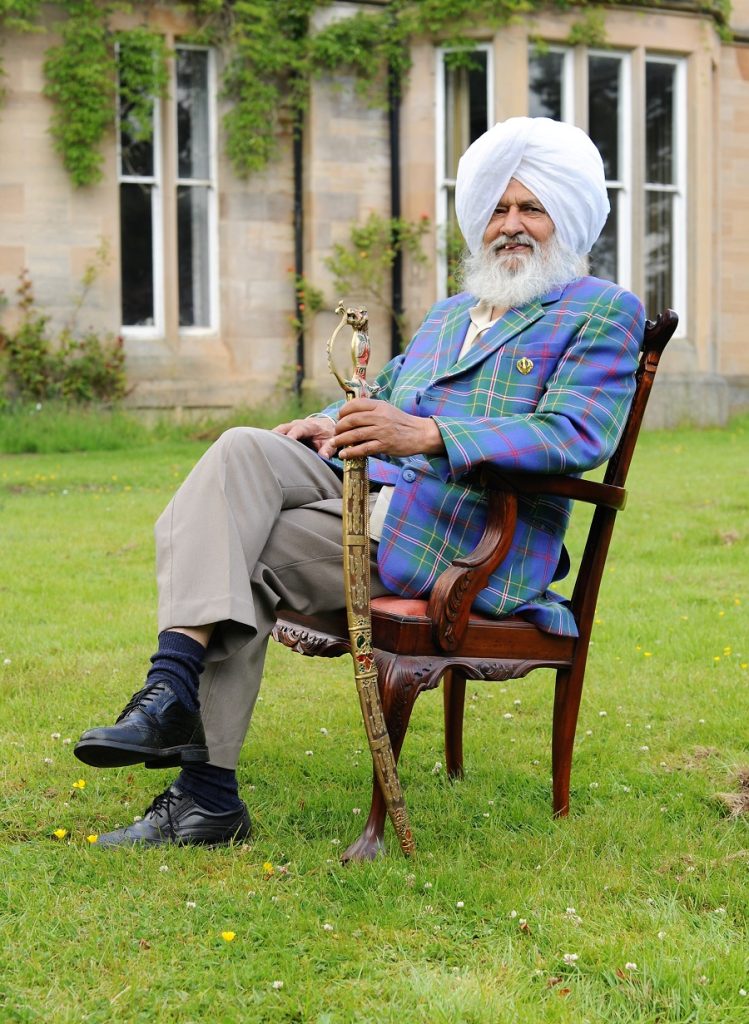
A video guide to The Iqbalnama
Explore the symbolism, themes, and intricate details of The Iqbalnama paintings up close with our video guide.
Singh tartan and the origins of The Iqbalnama
Rewind to the late nineties, a time when the South Asian community in Scotland was much smaller than it is today. Sardar Iqbal Singh was receiving press coverage for his efforts in fusing aspects of Scottish and Indian culture, and for raising awareness of his community in a very positive way. I found out that he was hoping to create a new tartan. Its design and colours would reflect his Indian background as well as his adoptive home of Scotland. It would be the first ever South Asian tartan.
At the time, I was gathering material for an exhibition at Paisley Museum, ‘Uncut Cloth’, exploring the richness of South Asian textiles and Indo-Scottish connections in the textile industry. I naturally saw the connection between Baron Singh’s activities and the ‘Uncut Cloth’ exhibition.
I helped him obtain official registration for his Singh tartan from the Tartan Society of Scotland, along with approval from the Sikh Council of India. This was successful, and the initial batch of Singh tartan was produced by Lochcarron of Scotland in Galashiels, a historic hotbed of textile production. A length of this tartan was exhibited in ‘Uncut Cloth’.
A feature of the exhibition’s education programme was a ceilidh. Baron Singh was in attendance, wearing Singh tartan trews and accompanied by his friend, the President of the World Burns Federation, resplendent in gold chain. The evening was a whirlwind of cultural fusion. It featured recitations of the poems by Robert Burns which Baron Singh had translated into Panjabi by a Sikh poet.
For entertainment, there was an Indian dhol drum performance as well as Indian and Scottish dances. Poems by Scottish poets on the theme of India were recited. It concluded with a rendering of Baron Singh’s Panjabi translation of Auld Lang Syne. One attendee, an academic from Strathclyde University, said it was ‘the best post-colonial, multicultural event’ he had attended!

I began to feel that the charismatic baron’s work in uniting Scottish and Indian culture deserved to be recorded. As a facilitator of arts projects promoting South Asian culture in Scotland, I felt he would be an interesting subject for a painting commission. I envisaged the creation of a series of paintings by an Indian artist depicting Baron Singh’s life and achievements. This would be in the style of the miniature paintings in Islamic art which depict the life of a hero or ruler, a genre which was adopted by the Mughal rulers of India.
Finding the artists: The Singh Twins
For some time I had admired the work of The Singh Twins, twin sisters from the Sikh community in Liverpool. Their paintings are a contemporary development of the Mughal miniature style. They wittily and meticulously depict aspects of the life of British South Asians, and would be the perfect fit for such a commission. The only problem was that I had never met them, nor did I know how to contact them.
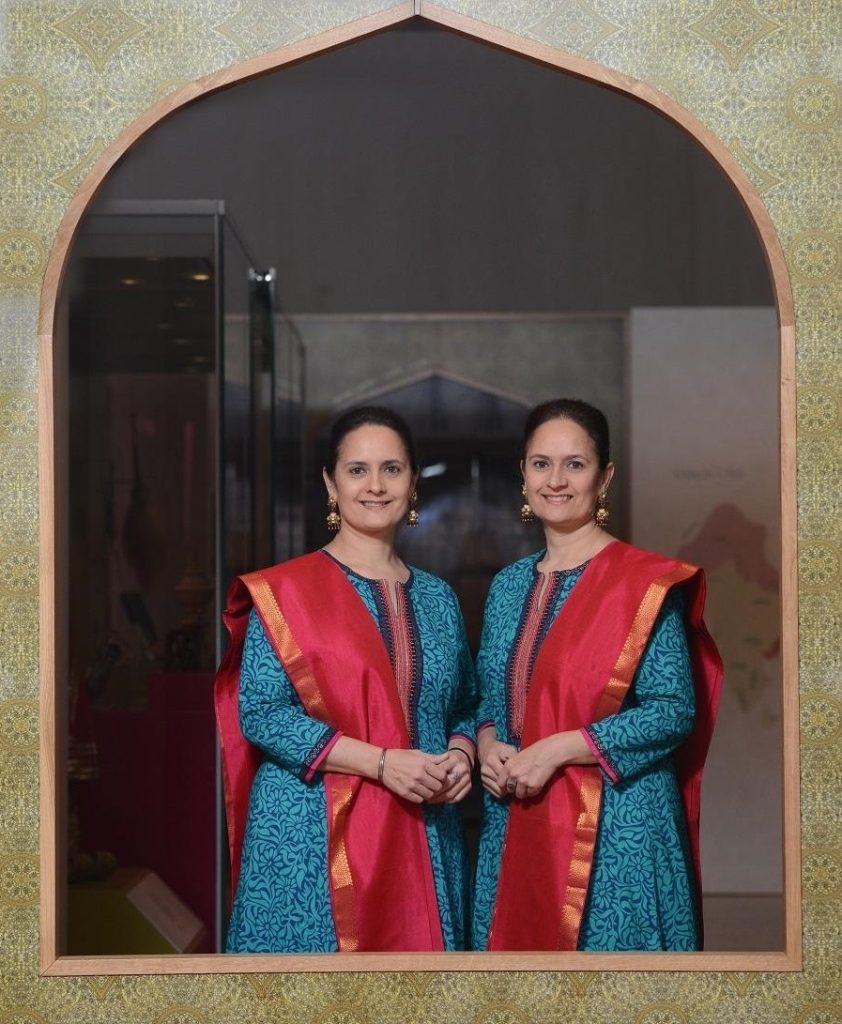
In an extraordinarily lucky moment, I encountered them by chance while standing in a queue outside the V&A in London waiting for the doors to open for a conference. Instantly recognisable, they stood behind me with their father, wearing identical kurta and pyjama outfits. They looked just as they did their paintings where they included themselves and their father.
A friendly conversation began. I expressed admiration for their work, and when I mentioned that Scotland was my home they expressed affection for Scotland and said that they often visited. I asked if they knew Sardar Iqbal Singh. They said they had not met him, but had heard about his work in raising the profile of the Sikh Community. I then asked if they might be interested in being commissioned for an artwork based on his life. They were, and handed me their card just as the doors opened and the queue dispersed.
On return to Edinburgh I wrote a proposal for a commission entitled ‘The Iqbalnama’. The title relates to the naming of the aforementioned Indo-Islamic paintings. Too often, projects featuring ethnic minority art were regarded as ‘community art’ and denied mainstream exposure. I therefore ensured that my projects would be hosted in mainstream venues.
My proposal for the paintings and an accompanying residency and education programme was accepted, funded by National Museums Scotland and a range of supporters including individuals and companies from the South Asian community. One such person was the restauranteur Tommy Miah. Tommy agreed to provide accommodation for the artists during their residency at the National Museum of Scotland in his hotel at Wester Coates, the first Indian-themed hotel in Edinburgh.
The Iqbalnama comes to life
Baron Singh was delighted to be the subject of the paintings, even insisting that the artists stay with him when they came to Scotland for research. He showered the artists and their father with the lavish hospitality and generosity for which he and his wife, Gertrude Egli, had become known for ever since taking homeless pensioners from Paisley into their home for Christmas in 1994 after severe flooding. Instant rapport was established between subject and artists, and their warm friendship was to last for the next twenty years.
The resulting artworks are in the permanent collection of National Museums Scotland. They are bright as jewels, full of cross cultural jokes, symbolic motifs and clever historical and architectural references. They tell the story of Baron Singh’s life and achievements, from his youth as an apothecary in Lahore to a gathering of friends (including The Singh Twins) in Lesmahagow many years later.
In one painting, we see him as a prosperous and relaxed property owner seated in the grounds of his ’Little Castle’ being entertained by a kilted piper. This was an amusing inversion of the tradition in paintings of the British Raj period where the white ‘sahib’ sits on a chair while ‘native’ musicians sit on the floor providing entertainment. Many more details like this are revealed in the video below, which zooms in on the full series of six paintings.
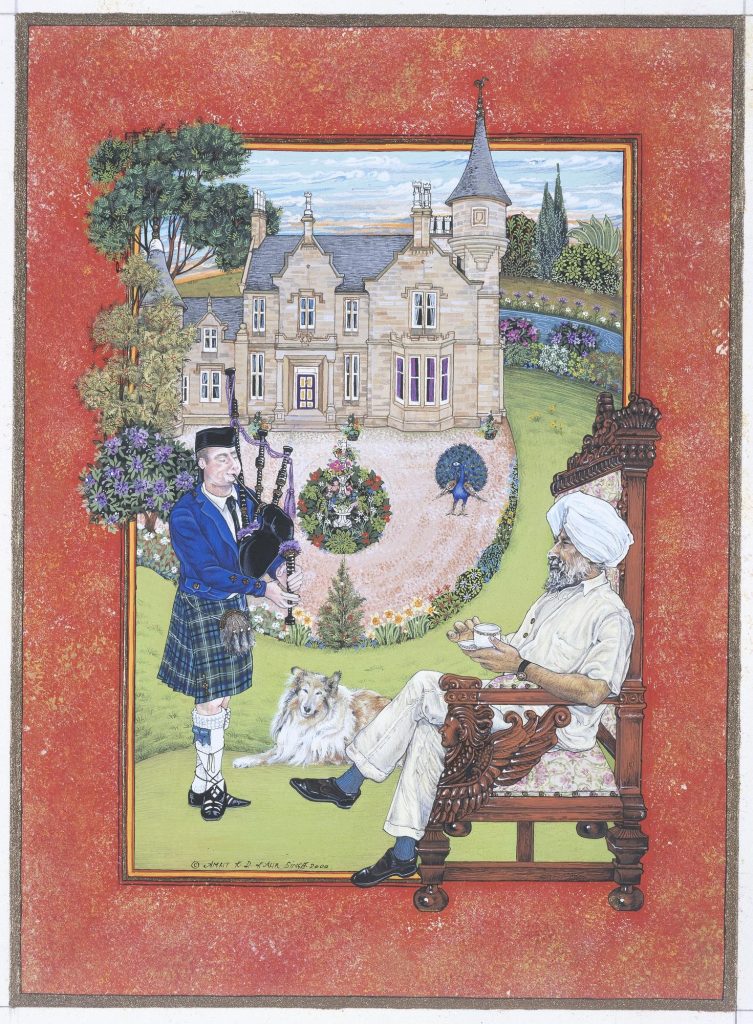
The education programme that was an important part of The Iqbalnama Project gained the Scottish Museums Council award for the best small education project in 2001. The programme had brought new audiences from the South Asian community to the National Museum of Scotland. The artists themselves had been outstanding role models for workshops targeting Sikh youth groups in Edinburgh and South Asian women in Glasgow. Video conferences with primary schools in Tobermory and Islay gave some Scottish primary school pupils their first experience of South Asian culture.
The content of the programme complimented all that Baron Singh strove to achieve. His wife wrote in a letter to me that her husband wanted ‘not only to inculcate deeper understanding amongst nations, but also create a healthier atmosphere in society’. At a time when questions of identity are increasingly prominent, this passionate Sikh advocate for common understanding is greatly missed.
Acknowledgments
This blog and video were made possible through the contributions of:
Elizabeth Guest, South Asian Arts Project Manager
Friederike Voigt, Principal Curator, West, South and Southeast Asia
Lauren Barnes, Assistant Curator, Asia (video narration)
The Singh Twins

